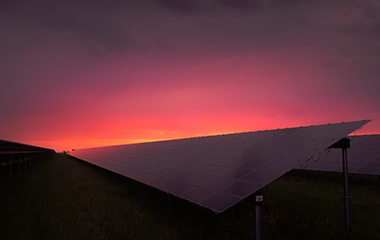Solar PV panels are a very straight forward and convenient way of being able to generate electricity for use in either buildings or homes, feeding back any surplus electricity to the National Grid.
How do they work?
Solar PV panels capture the sun’s energy within its photovoltaic cells. Energy is created from an electronic reaction caused by the sun touching the panels. The generated energy passes through an inverter in order to turn it into usable Alternating Current. Through a Government backed scheme, Feed in Tariffs (FITs) are paid for all energy generated, and any unused energy exported back to the Grid.
Solar PV panels create energy when an electronic reaction caused by the sun touching the panels. The stronger the sunshine the more effective the panels are at producing electricity although they do work at all times even in rain and cloud. Solar panels are most efficient when a roof is south facing, with no shadowing or obstructions and you are still connected to the Grid should you need any additional power.

What are the costs and benefits of Solar PV?
The top benefits of Solar PV are as follows:
- Government grants are available
- Tax free for 25 years
- You can use the electricity you generate
- The average ROI is around 8%
- VAT is set at 5%

A 3 kWp system can generate over 2,500 kilowatt hours of electricity a year – that’s around three quarters of a typical household’s electricity needs – and will save over a tonne of carbon dioxide every year,
The current Feed in Tariff (FIT) for a ≤4kW system is 21.0p/kWh, for a system of this size you can expect an income in excess of £650 per year.
Visit Green Route energy for more information on Solar Thermal suppliers.